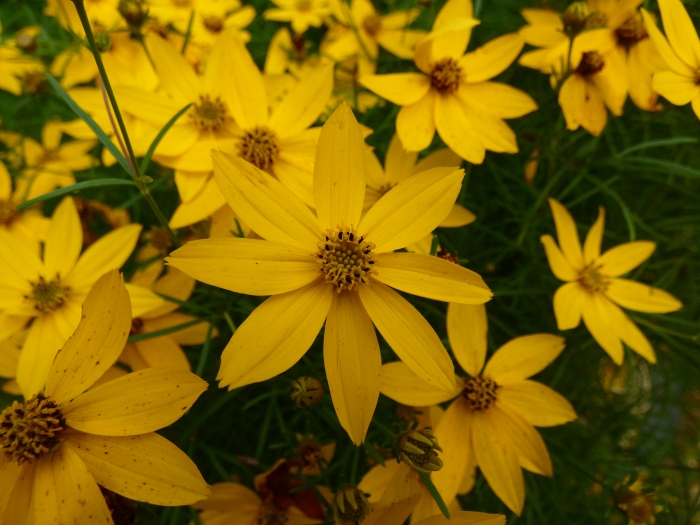Whorled Tickseed
(Coreopsis verticillata)
Whorled Tickseed (Coreopsis verticillata)
/
/

Zbigniew Niepokój
CC BY-SA 4.0
Image By:
Zbigniew Niepokój
Recorded By:
Copyright:
CC BY-SA 4.0
Copyright Notice:
Photo by: Zbigniew Niepokój | License Type: CC BY-SA 4.0 | License URL: https://creativecommons.org/licenses/by-sa/4.0 | Uploader: Jokopein | Publisher: Wikimedia Commons | Title: Nachyłek_okółkowy._(Coreopsis_verticillata)._01.jpg | Notes: {{Information |Description ={{en|1=Location taken: United States Botanic Garden, Washington D.C.. Names: Cyrilla racemiflora'Snake' , Furupraktbille, Marienprachtkäfer, Snake Black Titi, Большая сосновая златк Class... |











































































Estimated Native Range
Summary
Coreopsis verticillata, commonly known as Whorled Tickseed, is a semi-deciduous perennial herb native to open woodlands and meadows in the Mid-Atlantic region of the USA. It typically grows 2–3 feet (0.6–0.9 meters) tall and about 2 feet (0.6 meters) wide, but can spread wider due to its rhizomatous growth habit. The wiry stems support bright yellow flower heads that are up to 2 inches (51 mm) across, blooming profusely in clusters from midsummer to fall, adding a vibrant display to the garden. The flowers are particularly showy and can create a sea of yellow when planted en masse.
Whorled Tickseed is valued for its long flowering season, ease of maintenance, and resistance to pests and diseases. It is a magnet for butterflies, enhancing biodiversity, and is also deer resistant, making it a hassle-free choice for gardeners. Commonly used in borders, wildflower meadows, and as ground cover, it can also thrive in hanging baskets and containers with adequate watering. It prefers full sun to part shade and adapts well to a variety of soil types, provided they have good drainage. While generally low-maintenance, it can spread aggressively in some conditions, so gardeners may need to manage its spread to prevent it from overtaking other plantings.CC BY-SA 4.0
Whorled Tickseed is valued for its long flowering season, ease of maintenance, and resistance to pests and diseases. It is a magnet for butterflies, enhancing biodiversity, and is also deer resistant, making it a hassle-free choice for gardeners. Commonly used in borders, wildflower meadows, and as ground cover, it can also thrive in hanging baskets and containers with adequate watering. It prefers full sun to part shade and adapts well to a variety of soil types, provided they have good drainage. While generally low-maintenance, it can spread aggressively in some conditions, so gardeners may need to manage its spread to prevent it from overtaking other plantings.CC BY-SA 4.0
Plant Description
- Plant Type: Herb
- Height: 1-3 feet
- Width: 1-2 feet
- Growth Rate: Moderate
- Flower Color: Yellow
- Flowering Season: Spring, Summer, Fall
- Leaf Retention: Semi-deciduous
Growth Requirements
- Sun: Full Sun, Part Shade
- Water: Low, Medium
- Drainage: Fast
Common Uses
Bee Garden, Bird Garden, Border Plant, Butterfly Garden, Deer Resistant, Drought Tolerant, Erosion Control, Groundcover, Hummingbird Garden, Low Maintenance, Rabbit Resistant, Rock Garden, Salt Tolerant, Showy Flowers, Street Planting
Natural Habitat
Open woodlands and meadows
Other Names
Common Names: Thread-Leaved Coreopsis , Whorled Coreopsis , Pot-Of-Gold , Scheinquirl-Mädchenauge , Coréopsis Verticillé , Coréopsis Verticillée , Höstöga
Scientific Names: Coreopsis verticillata , Coreopsis tenuifolia , Bidens selenactis , Bidens verticillata , Coreopsis verticillata var. tenuifolia , Coreopsis verticillata var. verticillata
GBIF Accepted Name: Coreopsis verticillata L.